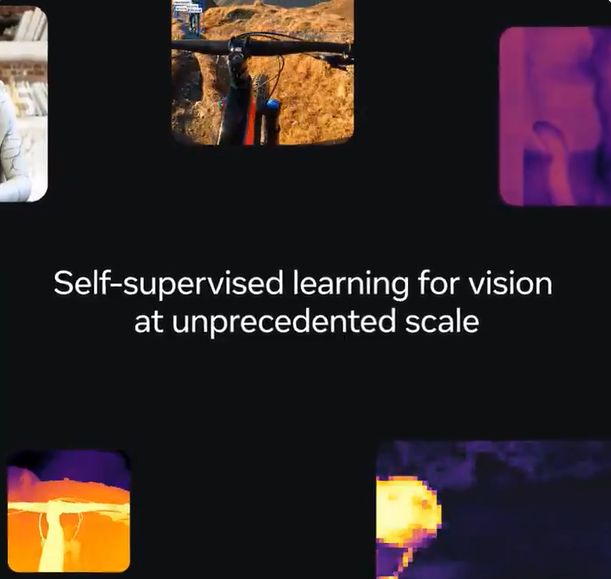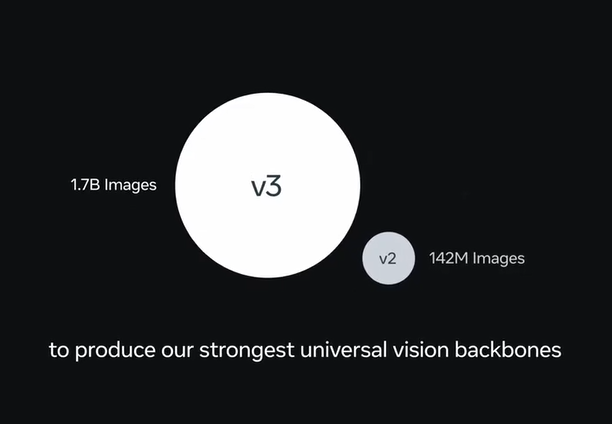Meta AI has recently officially open-sourced its next-generation general-purpose image recognition model, DINOv3, which has attracted widespread attention from global developers and researchers. This computer vision model based on self-supervised learning is considered a new milestone in AI visual technology due to its ability to achieve excellent performance without manual annotation.
Self-Supervised Learning: A Breakthrough Without Manual Annotation
The core innovation of DINOv3 lies in its self-supervised learning framework, completely eliminating the need for manual annotations. Traditional image recognition models usually require a large amount of annotated data for training, while DINOv3 can autonomously extract features from massive unannotated images through self-supervised learning. This feature not only reduces the cost of data preparation but also demonstrates significant potential in scenarios where data is scarce or annotation is expensive. Social media feedback shows that DINOv3 performs on par with or even surpasses leading models such as SigLIP2 and Perception Encoder in multiple benchmark tests, demonstrating its strong versatility.

High-Resolution Feature Extraction: Achieving Both Global and Local Details
Another highlight of DINOv3 is its high-quality, high-resolution dense feature representation capability. The model can capture both global information and local details of an image, providing strong support for various visual tasks. Whether it's image classification, object detection, semantic segmentation, image retrieval, or depth estimation, DINOv3 performs excellently. Moreover, DINOv3 is not limited to processing ordinary photos; it can efficiently handle satellite images, medical images, and other complex data types, laying a solid foundation for cross-domain applications.

Wide Application Scenarios: From Environmental Monitoring to Medical Security
DINOv3's versatility and high performance have shown broad application prospects in multiple industries. Here are some typical scenarios:
- Environmental Monitoring: DINOv3 can be used to analyze satellite images, helping monitor forest coverage, changes in land use, and more, supporting environmental protection and resource management.
- Autonomous Driving: Through accurate object detection and semantic segmentation, DINOv3 can enhance the ability of autonomous driving systems to recognize road environments and objects.
- Healthcare: In medical image analysis, DINOv3 can be used to detect lesions and segment organs, improving the efficiency and accuracy of diagnosis.
- Security Surveillance: Its ability to identify people and analyze behavior provides strong support for intelligent security systems.
Developers on social media have stated that the open-sourcing of DINOv3 offers small and medium-sized enterprises and research institutions a low-cost opportunity to access cutting-edge AI technology, especially in scenarios with limited data resources.
Open Source Empowerment: Promoting the Development of the AI Vision Ecosystem
This time, Meta AI has open-sourced the complete training code and pre-trained models of DINOv3 under a commercial-friendly license, greatly reducing the usage barriers for developers. The model supports loading through PyTorch Hub and Hugging Face Transformers library, offering pre-trained models of various sizes (from 21M to 7B parameters), adapting to different computational resource needs. Additionally, Meta has provided evaluation code for downstream tasks and example notebooks, making it easy for developers to get started quickly. Social media feedback indicates that DINOv3 has been integrated into the Hugging Face ecosystem, and the developer community has praised its ease of use and performance.
DINOv3 Opens a New Chapter in Visual AI
The release of DINOv3 represents not only a technological leap for Meta AI in the field of computer vision, but also an important push for the open-source AI ecosystem. Its self-supervised learning capabilities and multi-task adaptability provide developers with unprecedented flexibility, especially in scenarios with limited data. AIbase believes that the open-sourcing of DINOv3 will accelerate the deployment of AI visual technology in fields such as environment, healthcare, and autonomous driving, helping to build a more intelligent future.
However, there are voices on social media reminding that the widespread use of DINOv3 may bring potential risks such as privacy and bias, and further attention should be paid to ethical issues in its practical deployment in the future.
Conclusion
The open-sourcing of DINOv3 marks another breakthrough of self-supervised learning in the field of computer vision. From environmental monitoring to medical diagnosis, from autonomous driving to security surveillance, DINOv3's versatility and high performance are bringing new possibilities to various industries.
Project Address: https://github.com/facebookresearch/dinov3










